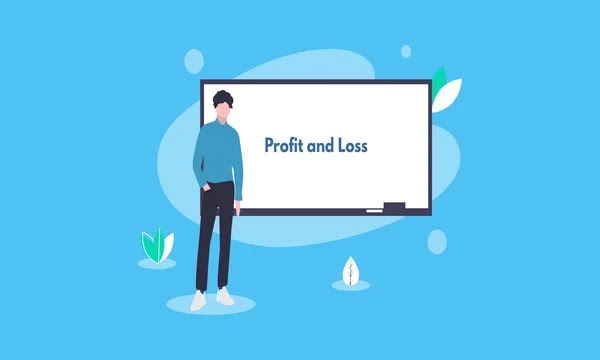Understanding Profit and Loss in Accounting.
Various fields of study utilize specific terms that are not effortlessly perceived by others.
Assuming you're a bookkeeping understudy or an expert bookkeeper, you realize the various terms utilized in bookkeeping.
One exceptionally famous term is benefit and misfortune.
All in all, do you have any idea what the term implies?
- Most importantly, you need to figure out what benefit implies.
- Benefit can be alluded to as net profit or overall gain.
- Organizations can either sell benefits or even items.
- Benefits will come from the deals of these administrations and items.
- Assuming the expenses of maintaining a business are controlled, it can amount to benefits.
- Benefits are additionally called ROI or profit from the venture.
- Be that as it may, this term is regularly restricted to protections like bonds or stocks.
- Yet, a few organizations use ROI to mean short or long-haul business results.
- Available pay is one more term for benefit.
The benefit and loss of a specific not entirely set in stone by finance experts through bookkeeping.
They can figure out what made the benefits just like the misfortunes.
Bookkeepers structure business conditions of some kind to legitimize the benefits and misfortunes of a business.
Thusly, they can without much of a stretch tell an organization's total assets.
It appears to be that beginning to characterize one bookkeeping term, in the long run, prompts characterizing different terms also.
Total assets is another term that is very hard to comprehend.
It alludes to the subsequent sum in the wake of deducting the liabilities of an organization from the resources.
Privately owned businesses allude to total assets as proprietors' value.
Why proprietor's value?
- Indeed, in the wake of deducting every one of the liabilities, what's left has a place with the proprietor.
- On account of public organizations, the benefit of the business is returned as profits to investors.
- As may be obvious, before the proprietor or investors of an organization can grab hold of the benefits, all liabilities should be deducted first.
- Each business intends to get a decent and positive figure since that would mean benefit to them; if not, the business is confused.
- Social orders and economies are based on benefits.
- In any case, there are times when a specific business causes misfortunes.
- Buyer practices and monetary patterns change.
- As a result of this reality, it is unimaginable to expect to anticipate the organization's future exhibition consistently.
How might you let me know if a business is confused?
- That is justifiable and surprisingly the people who have no foundation in bookkeeping know what it implies.
- All liabilities will be deducted from the resources and on the off chance that outcomes are in a negative sum, the business is confused.
- The bookkeeping staff of the organization can in any case seek compelling measures to resuscitate the business.
- If the business has productive and successful bookkeeping staff, the business can improve presently.
It can't be contended that a bookkeeping staff is expected to guarantee the organization's prosperity.
Without them, the achievement of the business isn't ensured.
So the proprietor of the business ought to pick the best bookkeeping staff.
That way, every one of the monetary exchanges and choices is noted and examined.
Really at that time would the organization be able to acquire benefits.
Benefit and misfortune is only basic bookkeeping term.
Besides the term, you likewise found out with regards to net profit, total compensation, total assets, profits, and so on.
To further understand the concept of profit and loss, it is important to know that there are different types of profits and losses.
One type of profit is gross profit, which is the difference between the revenue earned from sales and the cost of goods sold.
This type of profit does not take into account any other expenses like salaries, rent, and utilities.
Another type of profit is the operating profit, which is the gross profit minus all operating expenses.
Operating expenses are the expenses incurred in the day-to-day running of the business, including salaries, rent, and utilities.
Finally, the net profit or the bottom line is the amount left after all expenses have been deducted from the revenue.
It is the profit that is available for distribution to the owners of the business or for reinvestment back into the business.
On the other hand, losses are the negative difference between revenue and expenses.
They represent the costs that a business incurs to generate revenue.
Just like profits, there are different types of losses, such as gross loss, operating loss, and net loss.
Understanding the profitability of a business is crucial for making sound financial decisions.
It allows businesses to identify areas where they can cut costs, increase revenue, and improve overall performance.
Additionally, profitability ratios like the gross profit margin, operating profit margin, and net profit margin are essential in determining the financial health of a business.
It is also important to note that profitability is not the only indicator of a company's success.
Other factors like market share, customer satisfaction, and employee engagement are equally important in determining the overall success of a business.
In conclusion, understanding the terms and concepts related to profit and loss is essential for businesses to make informed financial decisions.
Profitability is just one aspect of a business's financial health, and other factors like customer satisfaction and employee engagement should also be taken into account.

